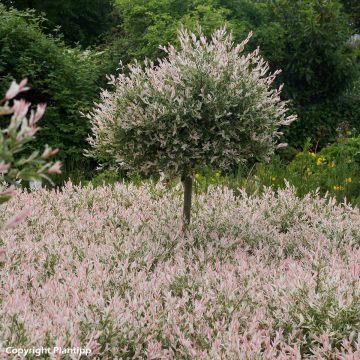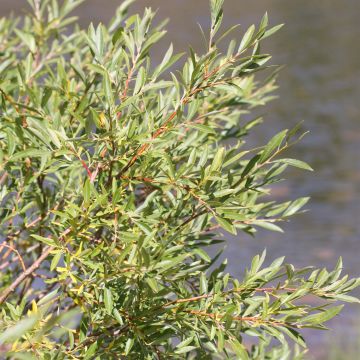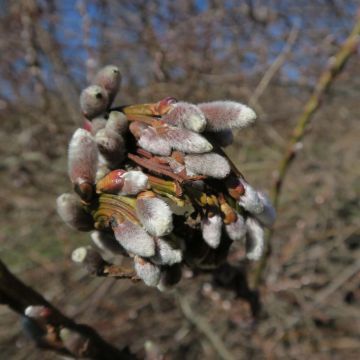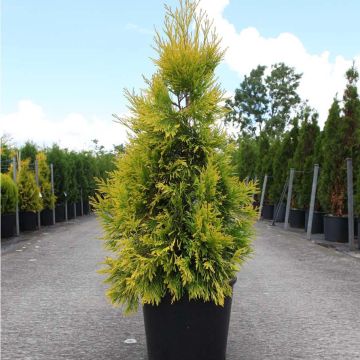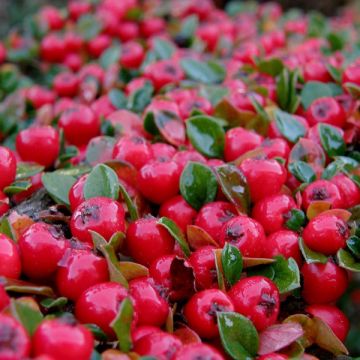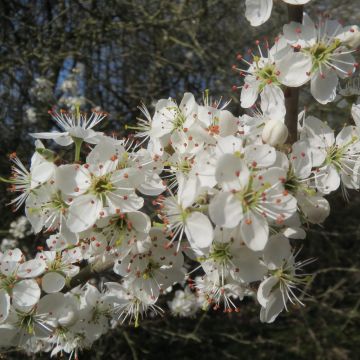Shipping country and language
Your country of residence may be:
Your country of residence is:
For a better user experience on our website, you can select:
Your shipping country:
Andorra
Austria
Belgium
Bulgaria
Canada
Chile
Croatia
Cyprus
Czechia
Denmark
Estonia
Finland
France
Germany
Greece
Hungary
Iceland
Ireland
Italy
Latvia
Lithuania
Luxembourg
Malta
Monaco
Netherlands
Poland
Portugal
Romania
Slovakia
Slovenia
Spain
Sweden
Switzerland
United Kingdom
We only deliver seed and bulb products to your country. If you add other products to your basket, they cannot be shipped.
Language:
French
German
Spanish
English
My Account
Hello
My wish lists
Plantfit
Log in / Register
Existing customer?
New customer?
Create an account to track your orders, access our customer service and, if you wish, make the most of our upcoming offers.


Americana willow - helix shape
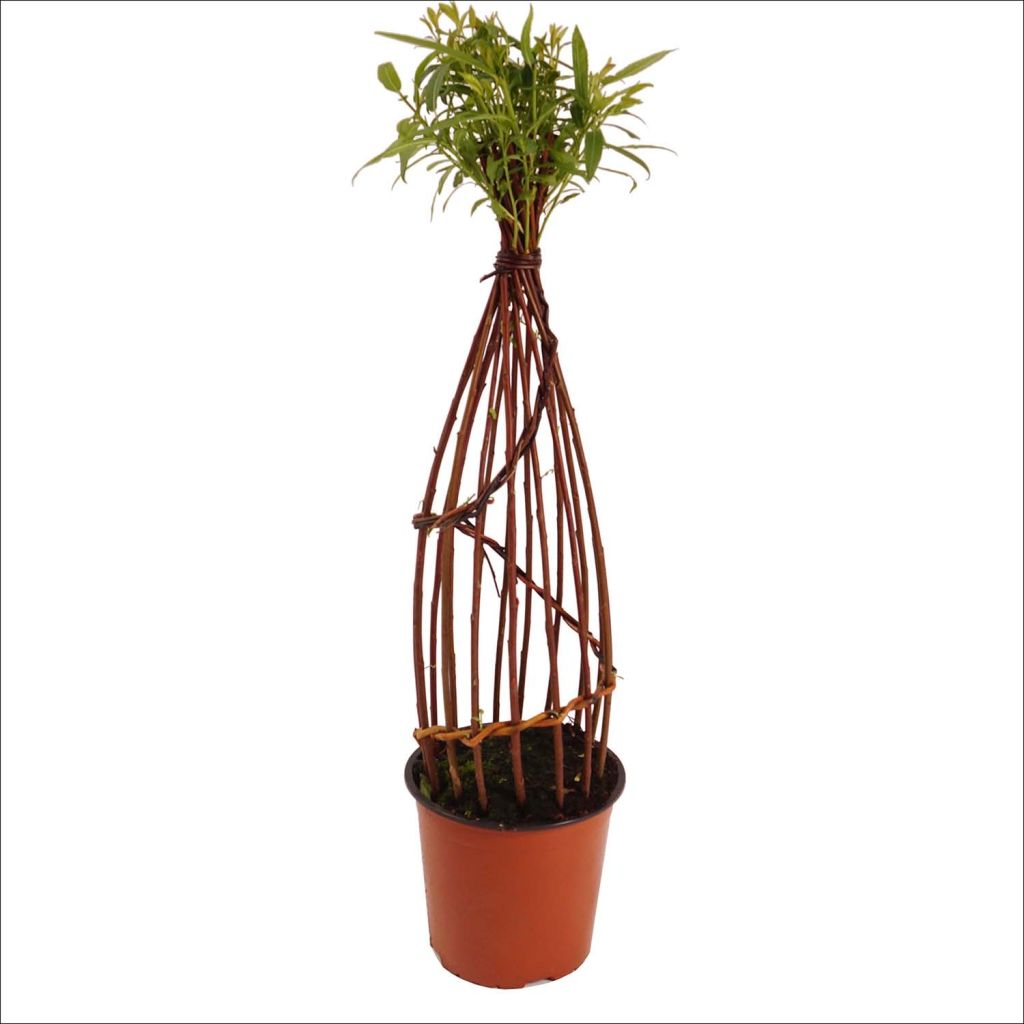

Americana willow - helix shape


Americana willow - helix shape
Americana willow - helix shape
Salix purpurea Americana
Purple Willow, Purple Osier, Bitter Willow
Why not try an alternative variety in stock?
View all →Order in the next for dispatch today!
Dispatch by letter from €3.90.
Delivery charge from €5.90 Oversize package delivery charge from €6.90.
More information
This item is not available in your country.
Schedule delivery date,
and select date in basket
This plant carries a 24 months recovery warranty
More information
We guarantee the quality of our plants for a full growing cycle, and will replace at our expense any plant that fails to recover under normal climatic and planting conditions.
From €5.90 for pickup delivery and €6.90 for home delivery
Express home delivery from €8.90.
From €5.90 for pickup delivery and €6.90 for home delivery
Express home delivery from €8.90.
From €5.90 for pickup delivery and €6.90 for home delivery
Express home delivery from €8.90.
Does this plant fit my garden?
Set up your Plantfit profile →
Description
The Braided Helix Willow, also known as Salix americana in Latin, is a type of Red Willow. Its branches have been carefully selected, directed, and bent to form a column supported by an ascending helix-shaped internal framework. Crowned with delicate green-blue foliage with silver reflections, the scarlet young branches of this willow stand out, particularly under the pale winter sun. As it ages, it retains its lustre but turns reddish-brown. This colourful bush is hardier and less invasive than bamboo and takes up minimal space on the ground. Whether as a standalone plant or a pot on the terrace, it can rival the elegance and flexibility of bamboo. It can be pruned at any time of the year and trained easily.
The Salix purpurea belongs to the Salicaceae family. It is a deciduous plant species in Europe, Central Asia, Japan, and North Africa. This species grows along the banks of rivers and ponds in its natural habitat, particularly on sandy or gravelly soil. It prefers a specific level of humidity but can tolerate poor and constantly flooded soil that suffocates its roots, just like the Salix alba (white willow), and can withstand periods of moderate drought. Its lifespan is approximately 20 years. It has long, flexible branches that can be shaped according to the gardener's or horticulturist's desire, and it is sometimes grown in the form of a "pollard." The Americana cultivar is known for its long, graceful stems and delicate foliage.
The Braided Brown-Red Wood Willow must be pruned heavily and regularly if you do not want it to reach a height of 10m (32.8 ft) and produce many long-coloured stems. The young, very flexible branches are a shiny mahogany red colour and then become brown with age. The buds are also purple. The deciduous foliage falls in early autumn. It comprises thin leaves arranged oppositely but not alternately like most other willows. They are thin and narrow, elliptical in shape, measuring 3 to 5 cm (2 in) long. The lamina is light green-silver on the upper side, while the underside is bluer and covered with prominent veins. The foliage takes on a yellow colour in autumn. The flowering, relatively discreet, takes place in March-April, before the appearance of the leaves. Male specimens bear silky catkins of 3-5 cm (2 in) (1.2 - 2 in) long, silver-green punctuated with purple stamens. Female specimens bear shorter, very discreet catkins. The fruit is a fluffy capsule that releases seeds covered in long decorative bristles.
For an impactful addition to your garden, consider strategically planting a Braided Brown-Red Wood Willow as a standalone specimen or in groups of three. Alternatively, you can place it in a large pot on your terrace or balcony, taking care to monitor watering. This tree is sure to earn you compliments from your visitors! If you have a vegetable patch or small tool shed you want to hide, consider planting several in a row to create a small hedge. The willow's branches intertwine to form stunning geometric figures draped in dense foliage, creating a genuine living sculpture that is constantly evolving.
Properties:
Red willow is a honey plant, also widely used in basketry. Its ability to stabilise unstable soils along riverbanks through its extensive and ramified root system is utilised to restore riverbanks.
Plant habit
Flowering
Foliage
Botanical data
Salix
purpurea
Americana
Salicaceae
Purple Willow, Purple Osier, Bitter Willow
Cultivar or hybrid
Other Willow - Salix
Planting and care
To successfully plant this willow, it is best to do so during autumn in a location that receives plenty of sunlight or partial shade in a warm climate. The plant requires soil that is relatively deep, neutral to limestone, moist but well-drained, and poor. It is recommended to use soil that dries out regularly rather than constantly waterlogged soil. However, it can still survive in poor and sandy, even gravelly soil. When planting, using a mixture of half potting soil and half garden soil mixed with coarse sand and gravel is ideal if the soil is compact and clay. The plant is resistant to cold and strong frosts. To maintain its beauty, it is essential to prune it short in late winter, at the start of vegetation, and remove any stems that may detract from its appearance. If you wish to grow the plant in a container, it is possible for a few years but requires regular watering and fertiliser.
Planting period
Intended location
Care
This item has not been reviewed yet - be the first to leave a review about it.
Hedge shrubs
Haven't found what you were looking for?
Hardiness is the lowest winter temperature a plant can endure without suffering serious damage or even dying. However, hardiness is affected by location (a sheltered area, such as a patio), protection (winter cover) and soil type (hardiness is improved by well-drained soil).

Photo Sharing Terms & Conditions
In order to encourage gardeners to interact and share their experiences, Promesse de fleurs offers various media enabling content to be uploaded onto its Site - in particular via the ‘Photo sharing’ module.
The User agrees to refrain from:
- Posting any content that is illegal, prejudicial, insulting, racist, inciteful to hatred, revisionist, contrary to public decency, that infringes on privacy or on the privacy rights of third parties, in particular the publicity rights of persons and goods, intellectual property rights, or the right to privacy.
- Submitting content on behalf of a third party;
- Impersonate the identity of a third party and/or publish any personal information about a third party;
In general, the User undertakes to refrain from any unethical behaviour.
All Content (in particular text, comments, files, images, photos, videos, creative works, etc.), which may be subject to property or intellectual property rights, image or other private rights, shall remain the property of the User, subject to the limited rights granted by the terms of the licence granted by Promesse de fleurs as stated below. Users are at liberty to publish or not to publish such Content on the Site, notably via the ‘Photo Sharing’ facility, and accept that this Content shall be made public and freely accessible, notably on the Internet.
Users further acknowledge, undertake to have ,and guarantee that they hold all necessary rights and permissions to publish such material on the Site, in particular with regard to the legislation in force pertaining to any privacy, property, intellectual property, image, or contractual rights, or rights of any other nature. By publishing such Content on the Site, Users acknowledge accepting full liability as publishers of the Content within the meaning of the law, and grant Promesse de fleurs, free of charge, an inclusive, worldwide licence for the said Content for the entire duration of its publication, including all reproduction, representation, up/downloading, displaying, performing, transmission, and storage rights.
Users also grant permission for their name to be linked to the Content and accept that this link may not always be made available.
By engaging in posting material, Users consent to their Content becoming automatically accessible on the Internet, in particular on other sites and/or blogs and/or web pages of the Promesse de fleurs site, including in particular social pages and the Promesse de fleurs catalogue.
Users may secure the removal of entrusted content free of charge by issuing a simple request via our contact form.
The flowering period indicated on our website applies to countries and regions located in USDA zone 8 (France, the United Kingdom, Ireland, the Netherlands, etc.)
It will vary according to where you live:
- In zones 9 to 10 (Italy, Spain, Greece, etc.), flowering will occur about 2 to 4 weeks earlier.
- In zones 6 to 7 (Germany, Poland, Slovenia, and lower mountainous regions), flowering will be delayed by 2 to 3 weeks.
- In zone 5 (Central Europe, Scandinavia), blooming will be delayed by 3 to 5 weeks.
In temperate climates, pruning of spring-flowering shrubs (forsythia, spireas, etc.) should be done just after flowering.
Pruning of summer-flowering shrubs (Indian Lilac, Perovskia, etc.) can be done in winter or spring.
In cold regions as well as with frost-sensitive plants, avoid pruning too early when severe frosts may still occur.
The planting period indicated on our website applies to countries and regions located in USDA zone 8 (France, United Kingdom, Ireland, Netherlands).
It will vary according to where you live:
- In Mediterranean zones (Marseille, Madrid, Milan, etc.), autumn and winter are the best planting periods.
- In continental zones (Strasbourg, Munich, Vienna, etc.), delay planting by 2 to 3 weeks in spring and bring it forward by 2 to 4 weeks in autumn.
- In mountainous regions (the Alps, Pyrenees, Carpathians, etc.), it is best to plant in late spring (May-June) or late summer (August-September).
The harvesting period indicated on our website applies to countries and regions in USDA zone 8 (France, England, Ireland, the Netherlands).
In colder areas (Scandinavia, Poland, Austria...) fruit and vegetable harvests are likely to be delayed by 3-4 weeks.
In warmer areas (Italy, Spain, Greece, etc.), harvesting will probably take place earlier, depending on weather conditions.
The sowing periods indicated on our website apply to countries and regions within USDA Zone 8 (France, UK, Ireland, Netherlands).
In colder areas (Scandinavia, Poland, Austria...), delay any outdoor sowing by 3-4 weeks, or sow under glass.
In warmer climes (Italy, Spain, Greece, etc.), bring outdoor sowing forward by a few weeks.


